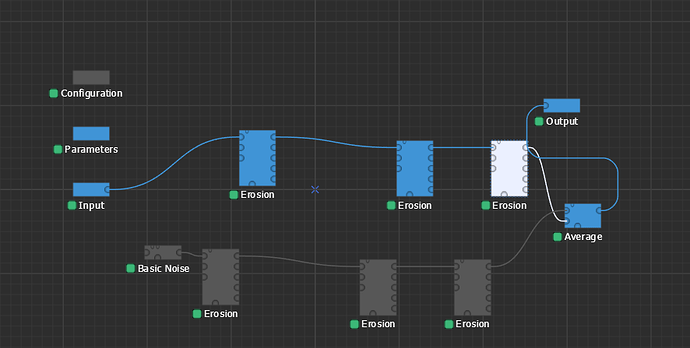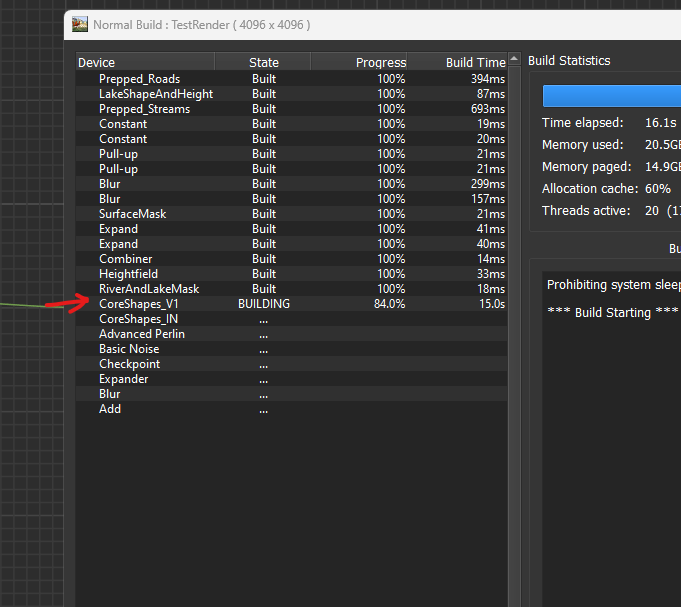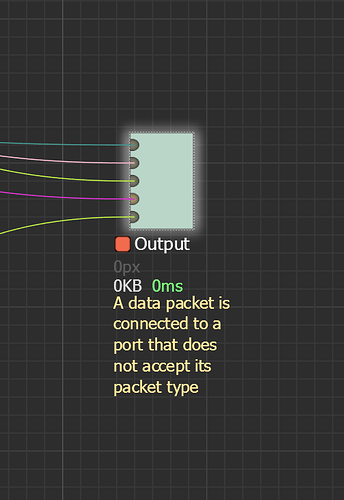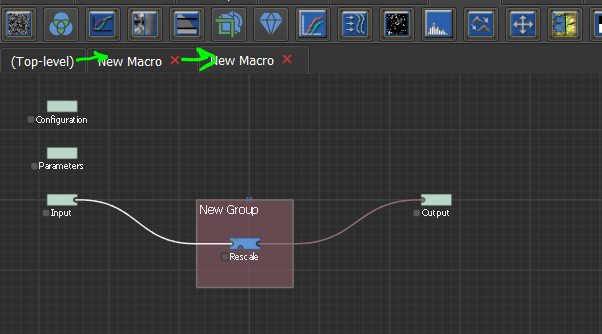Hi,
In our production (big open-world franchise) we haven’t been able to use any WM version past 3029. Mainly this was because the broken tile-importer but also because working inside macros stopped working properly in 4xxx.
Now that the tile stuff seems to be working I’ve spent some time investigating 4045 to see if it is suitable for our production. But unfortunately it is not.
In order to structure our scenes well enough (they get complex) we structure it with macros and output the result down the network. For instance “core shapes” > “underwater” > “cliffs” > “surface detail”. This makes the top level very easy to navigate and understand, and if I need to tweak some settings it’s easy to step inside the macro to do the work.
But… In the 4xxx versions, this isn’t working:
First of all, just selecting a node inside a macro, and then generate to that device (yellow button) forces the entire macro to re-generate. This alone invalidates our scenes, since a macro can be quite intense, and also have nested macros. I can’t wait 20-30 seconds when just tweaking a blur or adjusting an expand. It should only take milliseconds. It’s a blocker.
Secondly, often I only get a 256x256 preview resolution when generating to a device inside a macro. This is not always the case though, and I’m not sure why.
To reproduce: Create a macro in a simple scene. Go inside and set up a network of nodes. Make sure to have some erosion in there. End with a simple blur device or something. Select the blur device and generate to selected device. Observe render time and preview resolution. Now tweak the blur settings and repeat the generation to the device.
Expected result: It should only take milliseconds, and the preview resolution should be the same resolution as your scene/extent.
Actual result: The entire macro is regenerated. And likely the preview resolution is low.
(I’ve been trying to get around this but putting everything in the top level, but the new versions is just too slow with a lot of nodes.)
I think 4045 is a great update overall for simple scenes, but I would really like to be able to use it on our next project. I’m really sad that we can’t take advantage of the speed/quality improvements of the newer versions.
Cheers,
-Jan




